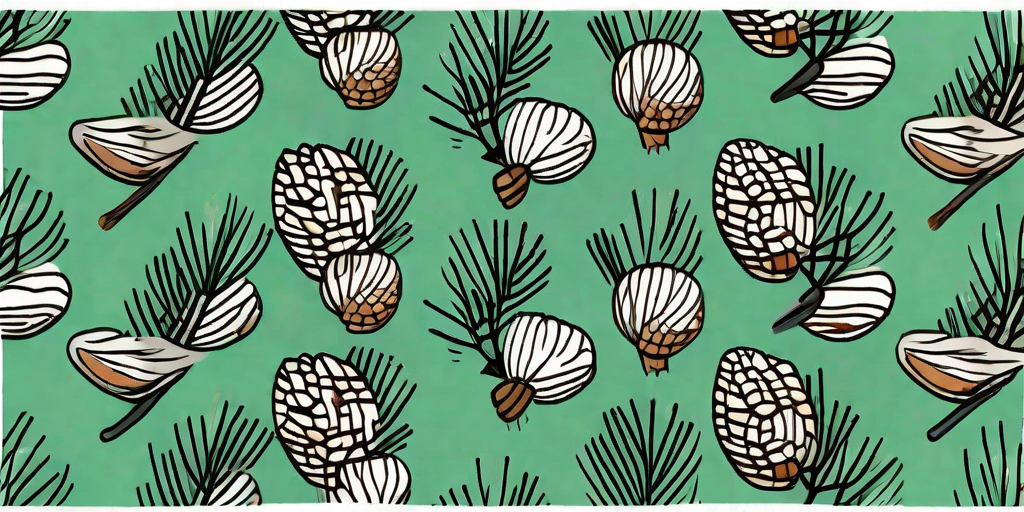
Welcome, dear nut enthusiasts, to the world of the pine nut tree. This humble tree, often overlooked in favor of its more flamboyant cousins like the walnut or the almond, is a veritable treasure trove of culinary and ecological delights. So, strap in, and prepare to embark on a journey of discovery that will leave you pining for more.
The Pine Nut Tree: An Introduction
First things first, let's get to know our subject a little better. The pine nut tree, or Pinus pinea, is a member of the pine family, and it's a bit of a show-off. While other trees are content with just producing leaves and the occasional fruit, the pine nut tree goes the extra mile by producing, you guessed it, pine nuts.
These aren't just any nuts, mind you. Pine nuts are the edible seeds of the tree, and they're a staple in many cuisines around the world. They're also a bit of a diva, requiring specific conditions to grow and produce their precious cargo. But more on that later.
Where Does the Pine Nut Tree Grow?
Pine nut trees are native to the Mediterranean region, but they've managed to make themselves at home in many parts of the world. You'll find them swaying in the breeze in countries like Spain, Italy, and Portugal, as well as in the Middle East and North Africa.
These trees are a bit like Goldilocks – they like their conditions just right. They prefer a Mediterranean climate, with hot, dry summers and mild, wet winters. They're not fans of frost, so you won't find them in colder climates.
The Life Cycle of a Pine Nut Tree
Now that we've got the introductions out of the way, let's delve a little deeper into the life of a pine nut tree. It's a tale of growth, maturity, and of course, nuts.
Pine nut trees are slow growers, taking anywhere from 20 to 50 years to reach maturity. But once they do, they're prolific producers, churning out pine nuts for up to 200 years. Talk about a long-term investment!
From Seedling to Tree
The journey of a pine nut tree begins with a seed. Once planted, the seed germinates and grows into a seedling. This stage can take anywhere from a few weeks to a few months, depending on the conditions.
Once the seedling has established itself, it begins to grow into a young tree. This stage can take several years, during which the tree develops its root system and begins to grow taller. It's a bit like the awkward teenage years, but for trees.
Producing Pine Nuts
Once the tree has reached maturity, it begins to produce pine nuts. This is the stage we've all been waiting for, the pièce de résistance of the pine nut tree's life cycle.
Pine nuts are produced in the tree's cones, which are a bit like nature's version of a Kinder Surprise. Each cone contains several seeds, or pine nuts, which are harvested once the cone has matured and opened up.
Culinary Uses of Pine Nuts
Now, let's get to the really exciting part – eating pine nuts. These little seeds are a culinary powerhouse, adding a rich, buttery flavor and a delightful crunch to a variety of dishes.
From pesto to pilaf, pine nuts are a versatile ingredient that can elevate any dish. They're also packed with nutrients, making them a healthy addition to your diet. But enough talk, let's get cooking!
Classic Pesto
When it comes to pine nuts, the first dish that comes to mind is pesto. This classic Italian sauce is a symphony of flavors, with the richness of the pine nuts perfectly complementing the freshness of the basil.
To make pesto, you'll need fresh basil, pine nuts, garlic, Parmesan cheese, and olive oil. Simply blend all the ingredients together until smooth, and voila, you've got yourself a delicious sauce that's perfect for pasta, sandwiches, and more.
Pine Nut Pilaf
Another dish that showcases the versatility of pine nuts is pilaf. This Middle Eastern dish is a flavorful combination of rice, spices, and pine nuts, and it's sure to impress at your next dinner party.
To make pine nut pilaf, you'll need basmati rice, pine nuts, onion, garlic, chicken stock, and a variety of spices. The result is a fragrant, flavorful dish that's a feast for the senses.
FAQs
Can I grow a pine nut tree in my backyard?
Yes, you can, provided you live in a suitable climate. Pine nut trees prefer a Mediterranean climate, with hot, dry summers and mild, wet winters. They also require well-drained soil and plenty of sunlight.
How long does it take for a pine nut tree to produce nuts?
Pine nut trees are slow growers, taking anywhere from 20 to 50 years to reach maturity and start producing nuts. But once they do, they can produce nuts for up to 200 years.
Are pine nuts healthy?
Yes, pine nuts are packed with nutrients, including vitamins, minerals, and healthy fats. They're a great addition to a balanced diet.
How do you harvest pine nuts?
Pine nuts are harvested from the tree's cones once they have matured and opened up. The process can be a bit labor-intensive, but the result is well worth the effort.
Conclusion
And there you have it, folks – everything you ever wanted to know about the pine nut tree. From its humble beginnings as a seed to its glorious maturity as a nut-producing powerhouse, the pine nut tree is a marvel of nature that deserves our admiration and respect.
So, the next time you're enjoying a delicious pesto or pilaf, take a moment to appreciate the journey of the humble pine nut. After all, it's not every day you get to crack the nut on such an intriguing topic.











